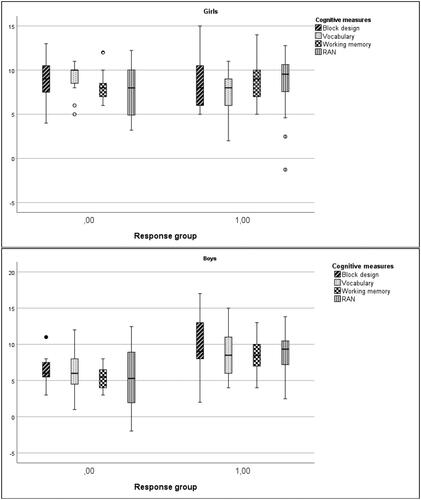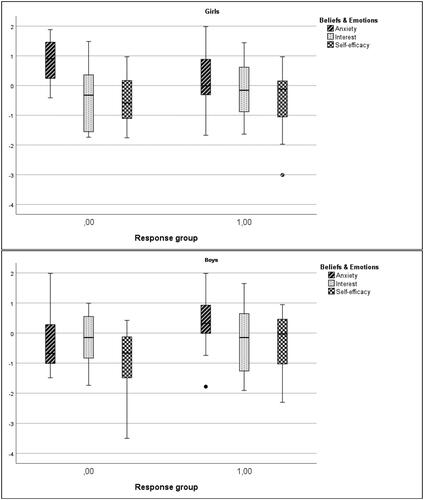Figures & data
Table 1. Descriptive statistics on the study variables.
Table 2. Correlations of the study variables.
Table 3. Hierarchical regression models for predicting the gain score with cognitive variables.
Table 4. Hierarchical regression models for predicting the gain score with math-related emotions and beliefs.
Figure 1. Profiles of the cognitive predictive variables of the response and no-response Groups by gender.



